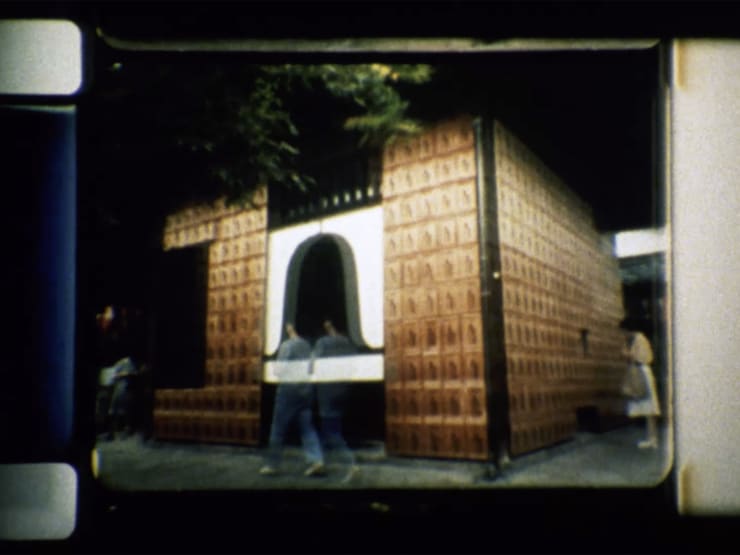Toshio Matsumoto
Matsumoto Toshio (born 1932) is a Japanese film director and video artist. After graduating from the University of Tokyo, where he majored in aesthetics, Matsumoto began working at Shinriken Films, a documentary-film production company. His first job as director was to make Ginrin (Silver Ring, 1956), an experimental promotional film. Jikken Kobo members Yamaguchi Katsuro, Kitadai Shozo, and Takemitsu Tōru were also involved in the production.
In the late ’50s, Matsumoto began making a new type of documentary that fused avant-garde and documentary elements. Nishijin (The Weavers of Nishijin, 1961) was awarded the San Marco Silver Lion and Haha-tachi (Mother, 1967) the San Marco Golden Lion (Grand Prix) at two different Venice International Documentary Film Festivals.
At the same time, Matsumoto wrote essays on film theory. In 1963, he published Eizo no hakken: Avangyarudo to dokyumentarii (The Discovery of Film: The Avant-Garde and Documentary), which exerted a strong influence on the Japanese film movement.
In the late ’60s, Matsumoto began to devote himself to experimental films and expanded cinema with Tsuburekakatta migime no tame ni (For the Damaged Right Eye, 1968). In 1969, he directed Bara no soretsu (Funeral Parade of Roses), a commercial narrative film that exemplified gay culture and the turmoil of the era. In 1970, he served as general director of the Textile Pavilion at the Japan World Exposition held in Osaka, where he presented Space Project Ako, a huge multiprojection video work. Yokoo Tadanori was in charge of the design for the pavilion.
Matsumoto subsequently expanded his activities, producing countless cross-genre works including commercial narrative films such as Shura (1971) and Dogra magra (1988), experimental films such as Atman (1975) and Engram: Kioku konseki (Engram: Memory Traces, 1987), and video artworks such as Metastasis: Shinchintaisha (Metastasis: Metabolism, 1971) and Shift danso (Shift, 1982). Matsumoto played a vital role as a pioneering figure in Japanese experimental film. His most recent work, Toro (Praying Mantis), was released in 2012.
(Biography provided by Postwar Japan Moving Image Archive.)



















